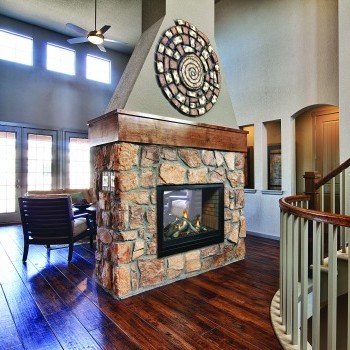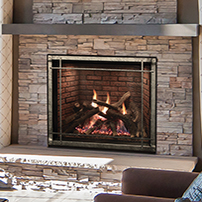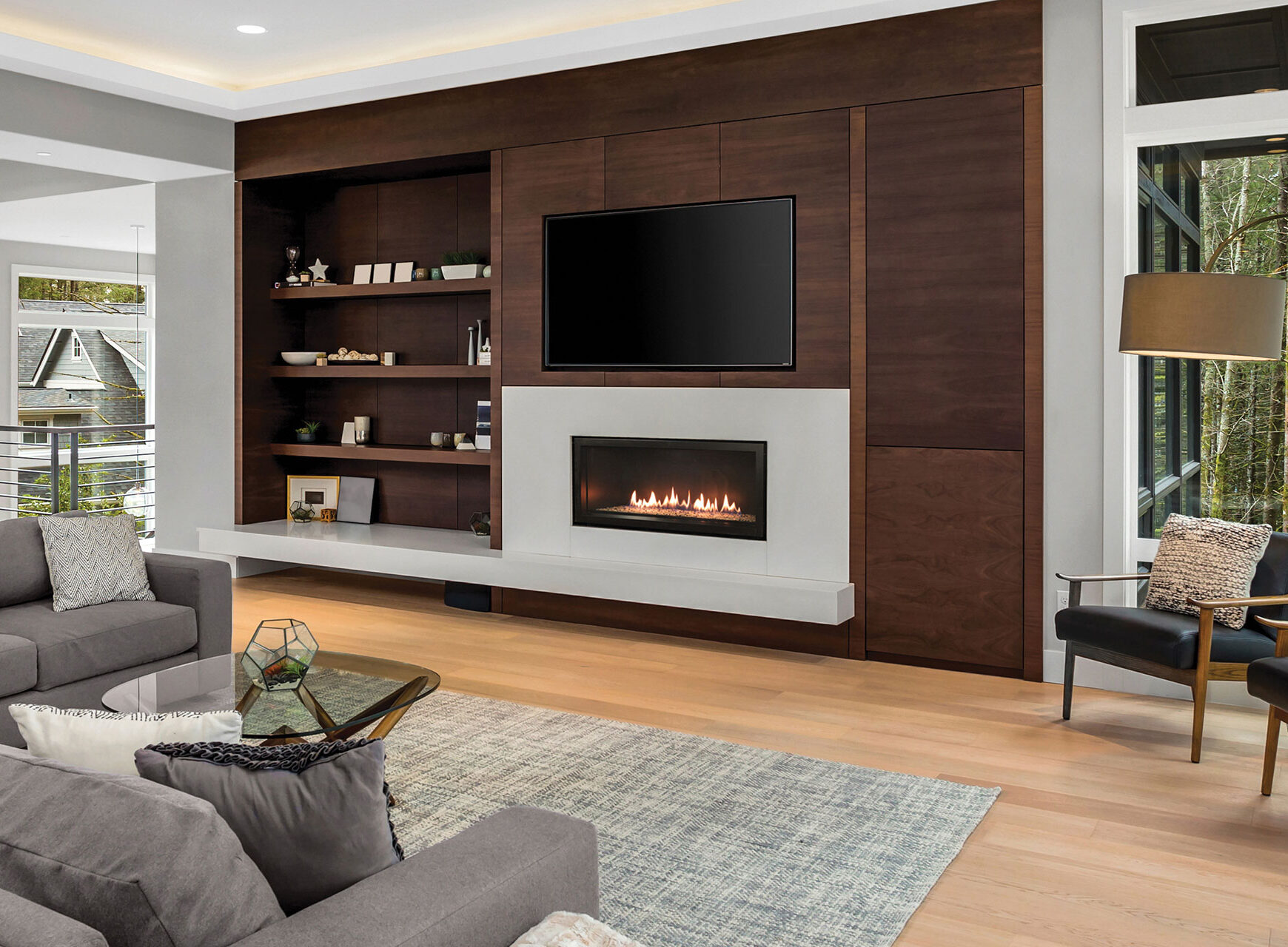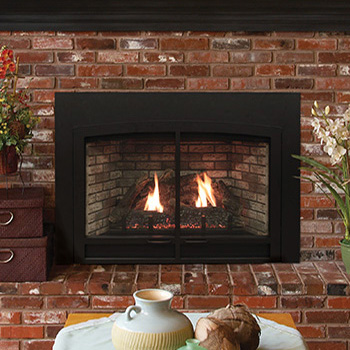Choose a product to learn more

Direct-Vent Fireplaces

Designer
Direct-Vent
Fireplaces

Linear
Direct-Vent
Fireplaces

Direct-Vent
Inserts
A Direct-Vent system uses two vent pipes. One draws air in from outdoors to support combustion. The other exhausts the by-products of combustion to the outside. The two vent pipes may be concentric (exhaust pipe within a larger diameter intake pipe) or co-linear (separate pipes of about the same size).
Combustion takes place inside a sealed chamber – with a glass front in the case of a fireplace. Room air circulates around the combustion chamber, often assisted by a blower, to heat the room.
A DV system is often installed along an outside wall to simplify the vent run, but can also be installed elsewhere in the home and vented through the roof.
Advantages:
- Good efficiency – 60 to 80%
- Good heat output with thermal transfer through the glass and air circulation
- Separates room air from combustion air
- May be used as primary heat source
- Can operate with a remote or thermostat
- Most systems can provide life-saving heat during a winter power outage
- Choose fireplace, insert, cast iron stove, or heater

